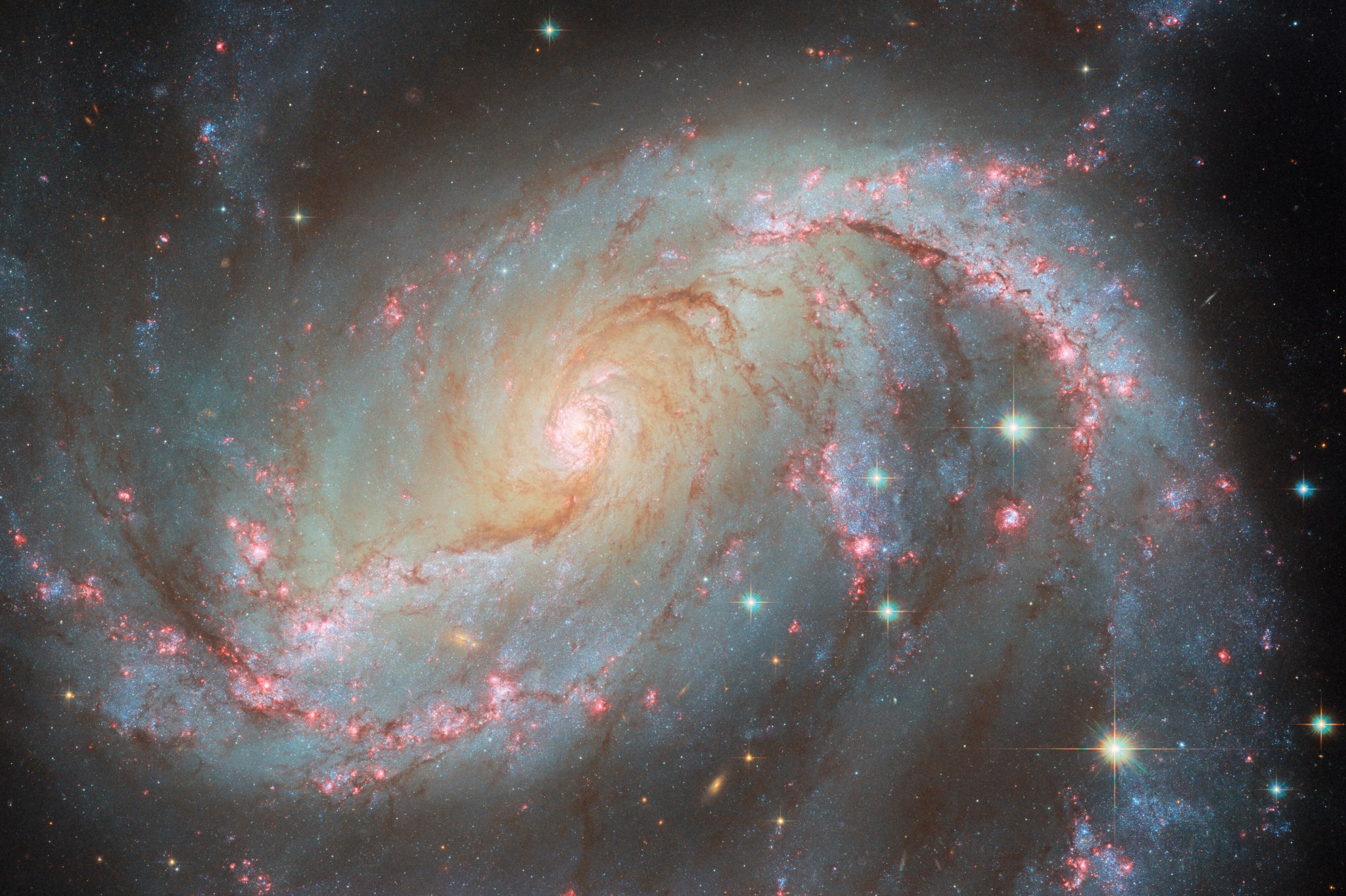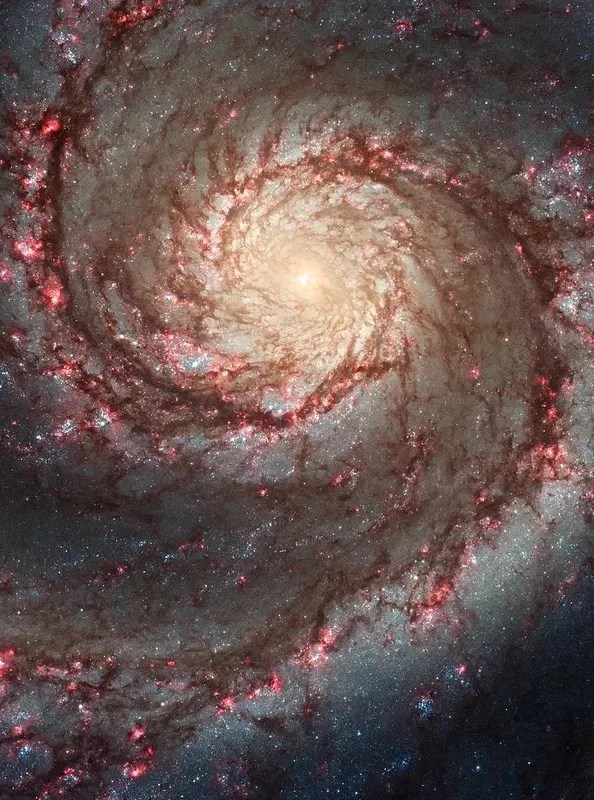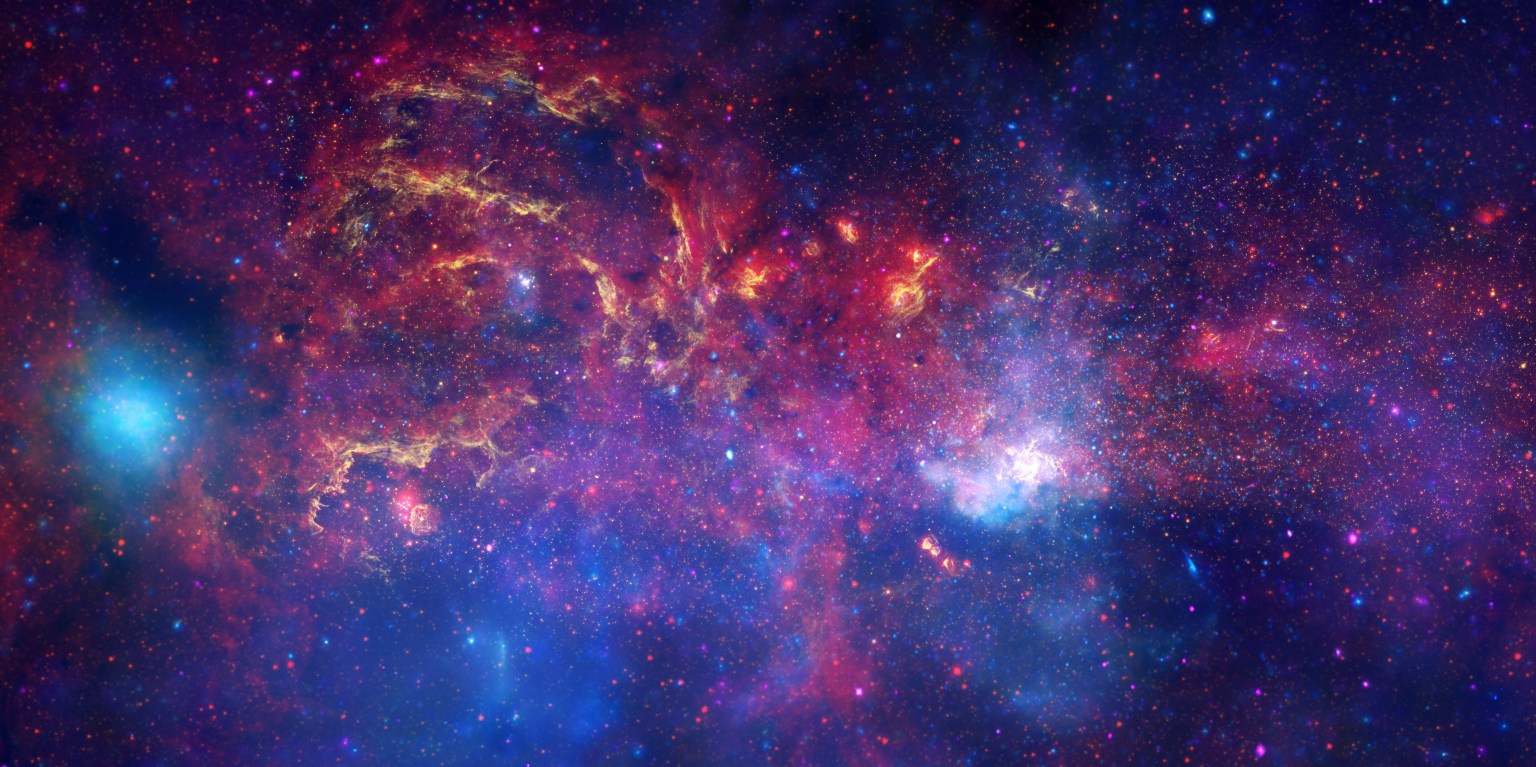This NASA/ESA Hubble Space Telescope image features NGC 1672, a barred spiral galaxy located 49 million light-years from Earth in the constellation Dorado. This galaxy is a multi-talented light show, showing off an impressive array of different celestial lights. Like any spiral galaxy, shining stars fill its disk, giving the galaxy a beautiful glow. Along its two large arms, bubbles of hydrogen gas shine in a striking red light fueled by radiation from infant stars shrouded within. Near the galaxy’s center are some particularly spectacular stars embedded within a ring of hot gas. These newly formed and extremely hot stars emit powerful X-rays. Closer in, at the galaxy’s very center, sits an even brighter source of X-rays, an active galactic nucleus. This X-ray powerhouse makes NGC 1672 a Seyfert galaxy. It forms as a result of heated matter swirling in the accretion disk around NGC 1672’s supermassive black hole.
2 min read
Hubble Captures a Galaxy with Many Lights
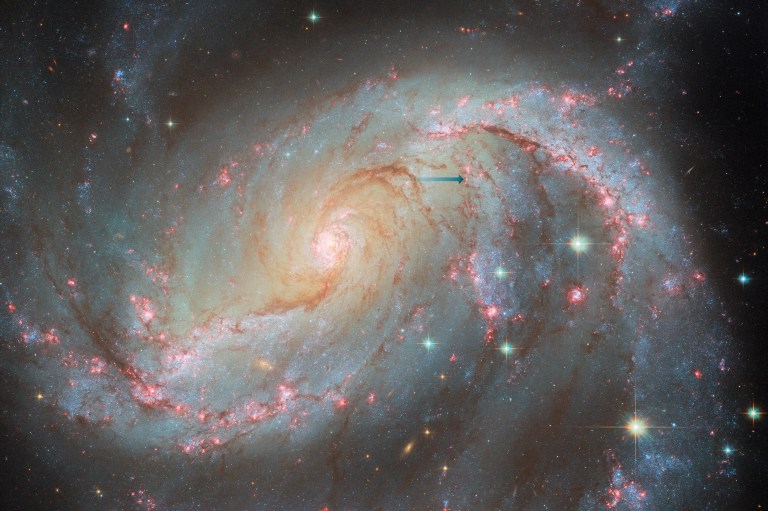
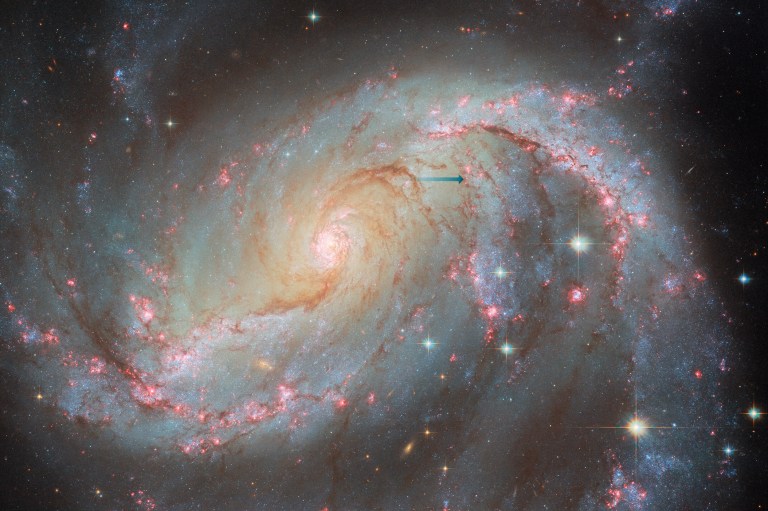


With the supernova and without the supernova
Supernova in Spiral Galaxy NGC 1672
Along with its bright young stars and X-ray core, a highlight of this image is the most fleeting and temporary of lights: a supernova, visible in just one of the six Hubble images that make up this composite. Supernova SN 2017GAX was a Type I supernova caused by the core-collapse and subsequent explosion of a giant star that went from invisible to a new light in the sky in just a matter of days. In the image above, the supernova is already fading and is visible as a small green dot just below the crook of the spiral arm on the right side. Astronomers wanted to look for any companion star that the supernova progenitor may have had — something impossible to spot beside a live supernova — so they purposefully captured this image of the fading supernova.
Recently, NGC 1672 was also among a crop of galaxies imaged with the NASA/ESA/CSA James Webb Space Telescope, showing the ring of gas and the structure of dust in its spiral arms. The image below compares the Webb image with Hubble's image.
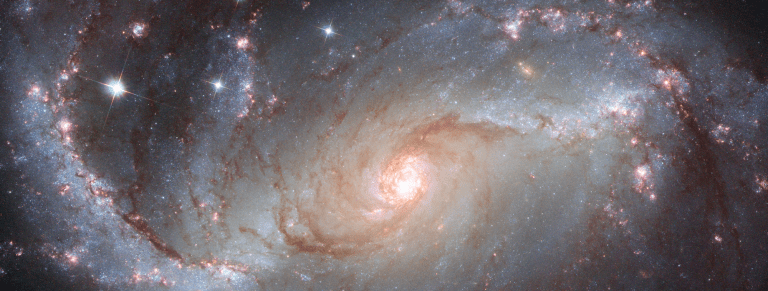
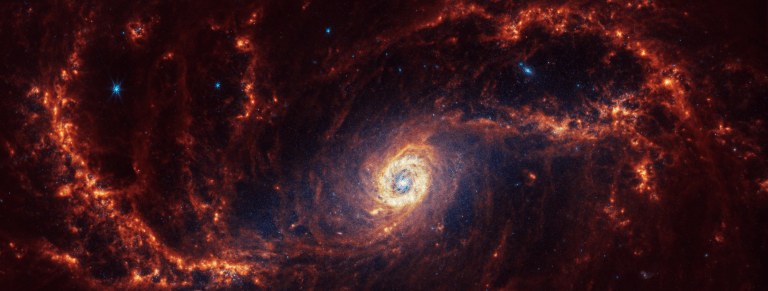


Hubble and Webb Views of NGC 1672
Media Contact:
Claire Andreoli
NASA's Goddard Space Flight Center, Greenbelt, MD
claire.andreoli@nasa.gov





























